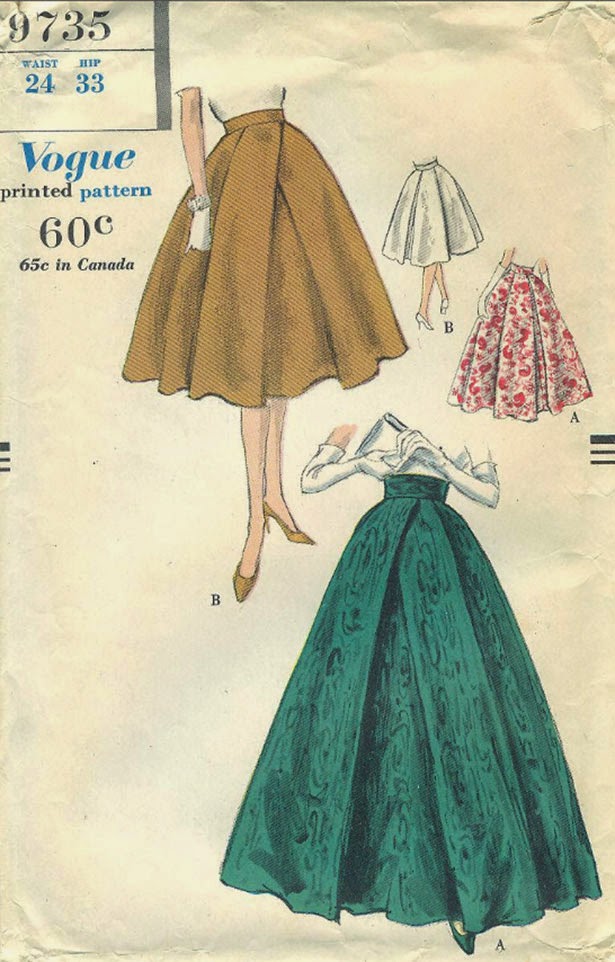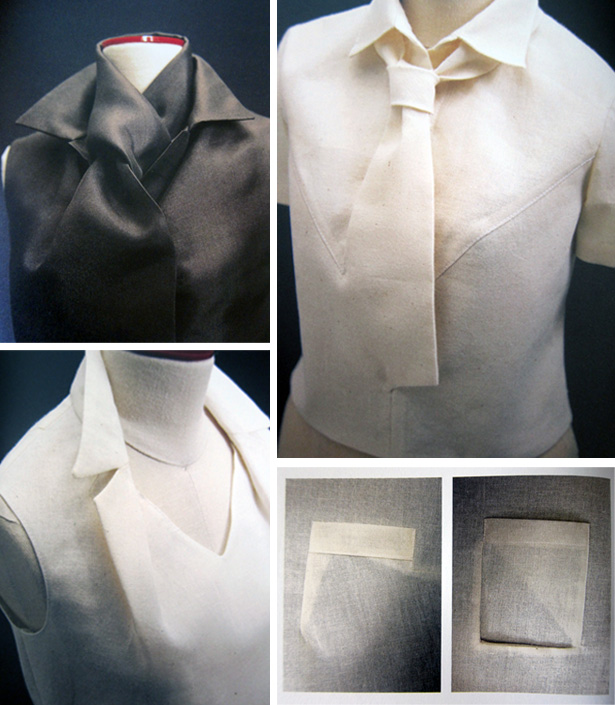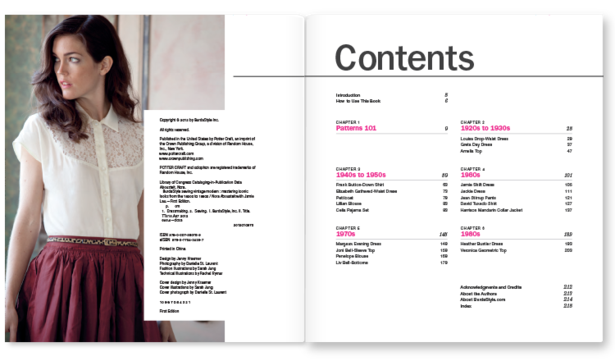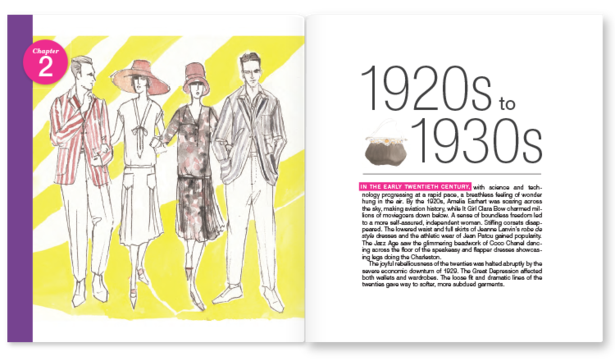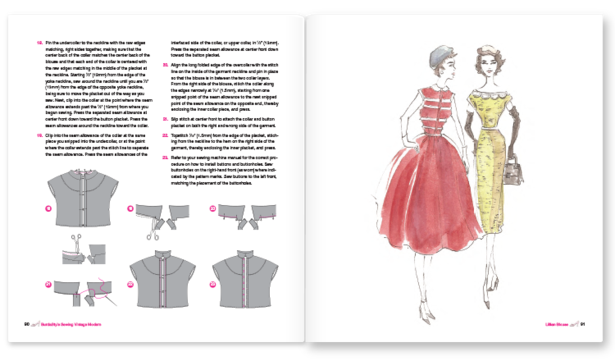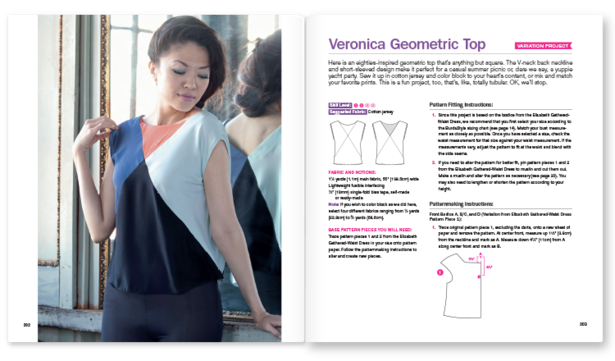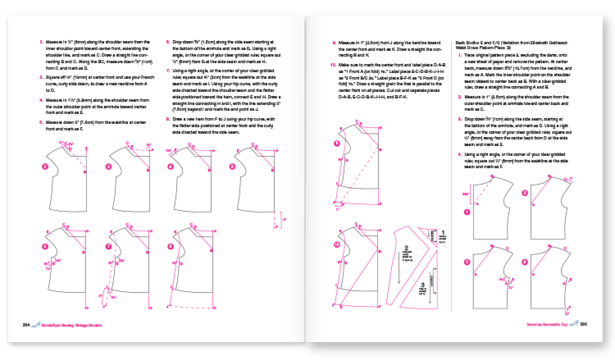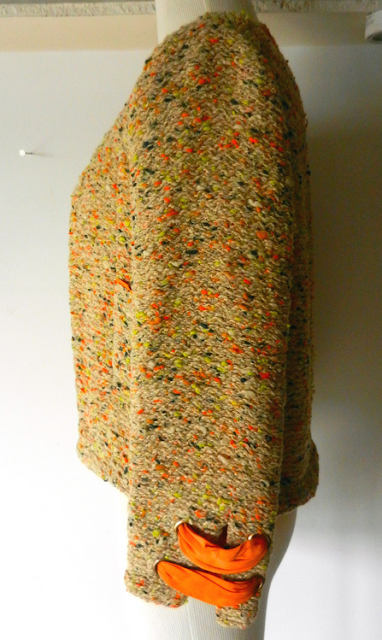Thank you for your patience, readers! I owe you some explanation. Once I started writing down pattern drafting instructions I realized that most of what you will find in books is drafted for a 'standard' and 'proportional' figure. Now, how many of you are 'standard'? I am a pear shape, with one size up in hips. So, would the rules for shaping a 'proportional' body apply to me?
Let's look at the skirt as a geometric figure. It is somewhat similar to a cylinder all the way to the hips, and then it is shaped with the help of darts and side seams. The different variables that determine the shaping process are the dart width, the dart length, the distance from the center front and center back, as well as dart shape.
Stay with me, it is not as complicated as it sounds. Please, read this post carefully and make notes for your particular case before we finally proceed with the drafting - the next worksheet is available
here. Post your questions in comments or on the
Flickr group. The main subject of this post is
darts.
WAIST SUPPRESSION
Waist suppression (
WSup) is
the difference between your
hip and
waist circumference, or the amount of fabric that needs to be taken in to shape the skirt around hips. This shaping is achieved with the help of darts. But before we determine all the dart variables we need to calculate this waist suppression value for our front and back pattern pieces.
WSup = him circumference - waist circumference
The value you get will need to be distributed in darts, as well as side seams. So-called standard difference for a more or less proportional figure is 15 to 25 cm. (6 to 10"), so we will first cover dart distribution for a standard waist suppression value, and then look at possible figure variations.
DART WIDTH
While creating this worksheet for this Draft-Along, I came across different instructions related to the dart width. Kenneth advises to take 3/4" (1,9 cm). Suzy Furrer has Dart Width Chart that gives some guidance but is not perfect (I won't go into details - it would be too nerdy). I checked a dozen of books, and only very few had some rational explanation for the dart width. So, after some calculations, below are the formulas I ended up with.
Before calculations, however, I would like to suggest to observe your body in a mirror and take in more where the curves are more pronounced. You must know your waist suppression value by now, so you will also know whether you are curvier than standard or not. If yes, look at yourself in the mirror and find out where are the most prominent curves (hips, tummy, seat bones), how are these areas shaped, how they relate to each other. In case of doubt, take pictures and post on our Flickr group. Images of the front and the side of your body can be helpful here.
Figures with W Sup = 15 to 25 cm (6 to 10")
Side seam intake = 0,5 x (W Sup : 2)
Front dart intake = 0,2 x (W Sup : 2)
front dart value will be between 1,5 and 2,5 cm
Back Dart intake = 0,3 x (W Sup : 2)
Below are some
examples for figure variations. It may sound complicated, and you may think why bother if you are going to eliminate fitting issues later anyway on the muslin. Well, first of all, some preparatory work will reduce time for fitting. And even if use the standard formula above, it is worth reading those examples as they train your eye and your fitting sense.
Figures with W Sup less than 15 cm (6")
In this case the hip curves are less pronounced, so, accordingly, there may be less shaping in the side seam. If you have a prominent tummy you may want, as an example, take in more in the front and in the back. Normally, back dart is slightly deeper than the front dart, but in this case you may get satisfactory results with an equal intake for both. Here is one possible calculation for the pattern draft.
Side seam intake = 0,4 x (W Sup : 2)
Front dart intake = 0,3 x (W Sup : 2)
Back Dart intake = 0,3 x (W Sup : 2)
Figures with wider hips, with W Sup more than 25 cm (10")
Hello, pear shapes! What we need to do in our case is increase the intake at the side seam, where the curves are strongest. As I have mentioned earlier, I am one size up in hips, so the formula below works best for me.
Side seam intake = 0,5 x (W Sup : 2) + 0,6 cm (1/4")
Front dart intake = 0,2 x (W Sup : 2) - 0,6 cm (1/4")
Back Dart intake = 0,3 x (W Sup : 2)
If the difference is two, three sizes more, you may have to make additional adjustments and add another dart in the back. This is especially true for figures with a prominent seat. On the contrary, figures with a flat seat but wide hips may need a narrower back dart, with increased intake in the side seam.
Again, please, keep in mind that this formula is only a suggestion - your figure may be have other features that may influence the fit and you will achieve best results when fitting the muslin. However, these example may make your fitting somewhat easier.
DART DISTANCE
Dart distance is measured from the reference point to the dart center line. Note the distance for the darts on your Dart Worksheet. I discuss two methods of determining dart distance, with the second one being my preferred one.
Front dart
The rule for the front is: the dart distance for the front increases with the waist circumference, adding 1/8" for every 1" of the waist circumference. Here is the quick reference chart from
Suzy Furrer's book. Note that here, the distance is measured to the nearest dart leg, not to the center line:
Waist Dart distance
24" 2 3/4"
25" 2 7/8"
26" 3"
27" 3 1/8"
28" 3 1/4"
29" 3 3/8"
30" 3 1/2"
31" 3 5/8"
32" 3 3/4"
33" 3 7/8"
34" 4"
add 1/8" to the dart instance for every additional 1" in the waist circumference
Another good pattern drafting system recommends placing front darts
6 to 8 cm (2 3/8" to 3 1/8") from the side seam, which comes slightly close to the side seam than in Suzy Furrer's or Kenneth King's instructions. 6 cm. is recommended for a smaller waist, with 8 cm. as a maximum increase. Placing the dart closer to the side seam should be more aesthetically pleasing. Personally, I prefer the latter method not only because it is easier to use, but also because it looks nicer.
Back dart
This one is simple,
divide the back waist calculation in half to find the placement for the back dart center line.
DART LENGTH
Finally, the dart length can be easily referred using the following chart. It is converted from inches, that's why it looks somewhat weird in centimeters.
Dart width Dart length
1 cm (3/8") 7,5 cm (3")
1.9 cm (3/4") 9 cm (3 1/2")
2,5 cm (1") 10 cm (4")
3,2 cm (1 1/4") 11,5 cm (4 1/2")
This is it for today. Hope it doesn't look too intimidating. To make you feel better I should add that the most complex part of the drafting. the rest is just drawing lines, no more lengthy math calculations. Any questions?![]()
![]()





